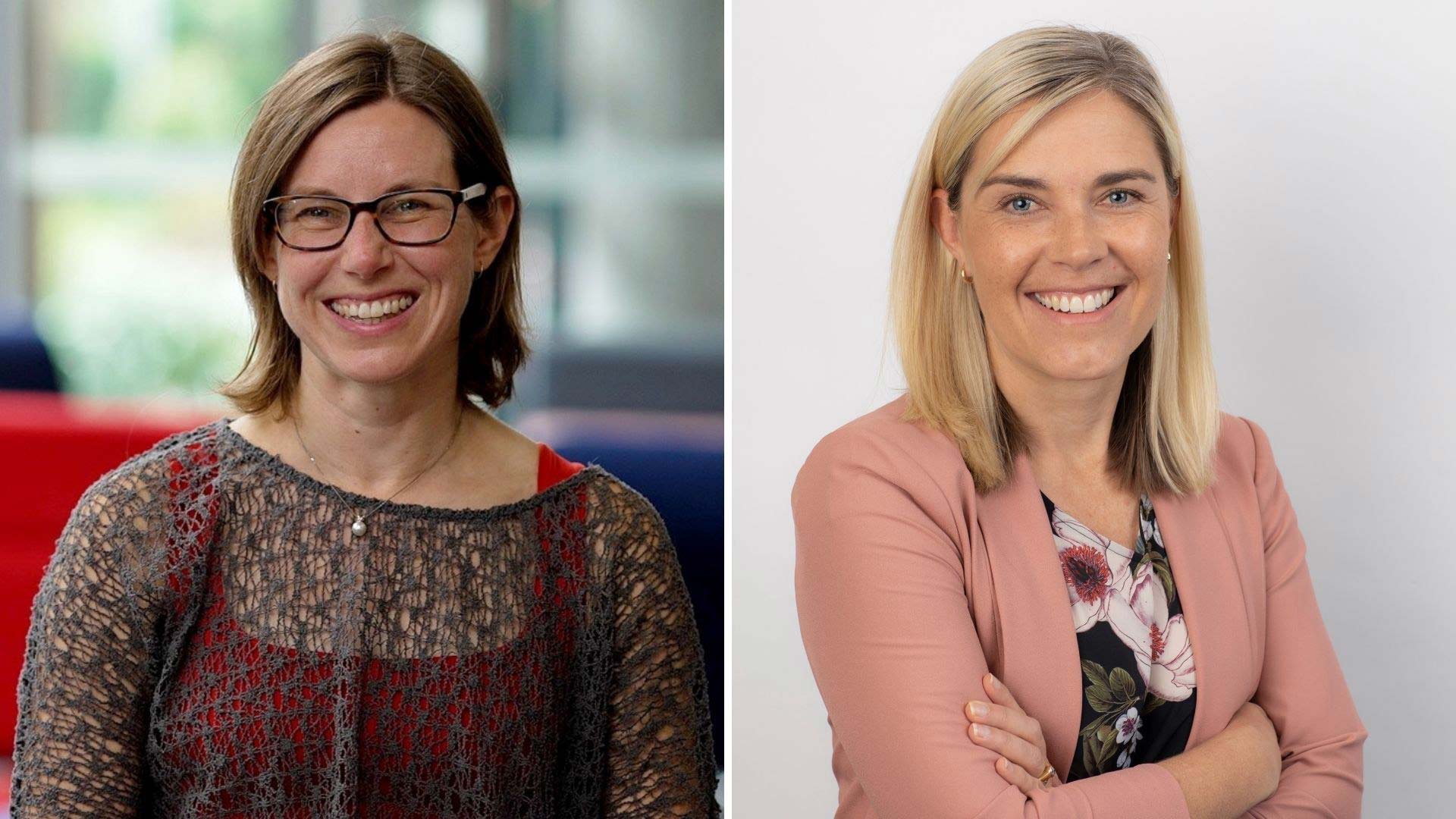Associate Professor Jenny Fisher awarded Anton Hales Medal, Professor Kerrylee Rogers awarded Frederick White Medal

Two University of Wollongong (UOW) scientists have been recognised by the Australian Academy of Science today (Thursday 10 March), receiving prestigious 2022 honorific awards for their outstanding contributions to climate and environmental science.
Associate Professor Jenny Fisher was awarded the Anton Hales Medal 2022 for research into how trace gases such as mercury and other pollutants are transported and distributed through the atmosphere, which informs the management of air pollution as well as climate modelling.
Professor Kerrylee Rogers was awarded the Frederick White Medal 2022 for research showing that coastal wetlands have the capacity to store carbon, protecting natural ecosystems, and helping fight climate change by responding dynamically to sea-level rises.
UOW Deputy Vice-Chancellor (Research & Innovation) Professor Jennifer L Martin congratulated both researchers for their outstanding scientific contributions to environmental research.
"I am thrilled to bits and so proud of these two fabulous UOW researchers. These are prestigious awards and fitting recognition of Professor Rogers and Associate Professor Fisher's outstanding and impactful research to drive real change, locally and globally," Professor Martin said.
"It's a terrific achievement to see our researchers celebrated on the national stage, especially during this week when we celebrated International Women's Day."
Tracking pollutants
Associate Professor Fisher, an atmospheric chemist in UOW's Centre for Atmospheric Chemistry and Associate Dean (Equity, Diversity and Inclusion) Faculty of Science, Medicine and Health said trace gases, such as mercury and other pollutants, occur in small quantities in the atmosphere, but can have a big impact on our health, climate and environment.
"At its core my research is about understanding the compounds in the atmosphere, and I'm interested in the whole lifecycle of those compounds," Professor Fisher said.
Understanding the sources, atmospheric movement and fate of trace atmospheric species is crucial for the development of evidence-based policies for the management of air pollution.
Associate Professor Fisher's complex computer models help us understand what we can't always see, offering fundamental conclusions and predictions about our planet through the management of air pollution and how it interacts with climate change.
Mercury pollution emitted to the atmosphere has led to more mercury in the oceans, ending up in our seafood and leading to chronic health problems.
Anton Hales Medal - Associate Professor Jenny Fisher from The Australian Academy of Science on Vimeo.
Associate Professor Fisher's work identified that seasonal pulses in atmospheric mercury in the Arctic were driven by the spring thawing of massive Arctic rivers. Now she has turned her attention to understanding mercury pollution in the Southern Hemisphere, including in Australia.
Her models can also track other pollutants, such as the smoke from Sydney's bushfires in 2019.
"Exposure to air pollution is a major public health concern. Globally, more than 4 million people die prematurely each year because of outdoor air pollution," Associate Professor Fisher said.
The recognition by the Australian Academy of Science is particularly important to Associate Professor Fisher.
"I feel especially honoured to be one of the few women who have received the Anton Hales Medal award. There are so many amazing women Earth scientists who are role models to the rest of us but aren't always recognised for their accomplishments. I hope this encourages others to nominate their women and non-binary colleagues for these kinds of awards."
Protecting Australia's wetlands
Professor Kerrylee Rogers from UOW's School of Earth, Atmospheric and Life Sciences and co-director of GeoQuEST Research Centre has made an internationally significant contribution to understanding the impact of climate change on one of the world's most threatened and ecologically important habitats, coastal wetlands.
Mangroves, saltmarsh, swamps, seagrasses and phytoplankton are among the most efficient natural systems in sequestering atmospheric carbon dioxide.
Professor Rogers' work has highlighted the role of coastal wetlands in carbon sequestration, suggesting as sea levels rise, wetlands can help mitigate climate change by trapping sediment and building root systems.
"They pull carbon from the atmosphere into their biomass and push it down underground storing it away for a long period of time and so it contributes to climate regulation," Professor Rogers said.
Frederick White Medal - Professor Kerrylee Rogers from The Australian Academy of Science on Vimeo.
Professor Rogers warns that the zone between the lower elevation mangrove and the higher elevation saltmarsh is changing.
"That mangrove encroachment into saltmarsh is really our warning: you need to start planning for this now," Professor Rogers said.
Professor Rogers has shown that the restoration of coastal wetlands is an effective climate change adaptation strategy that can yield financial benefits to landholders. Carbon captured through wetland restoration can be reported by governments as saved emissions and traded by landholders in emissions trading programs.
"Blue carbon science has advanced considerably in the past few years and the uptake of knowledge is increasing. I like to think that the research we undertook played a role in this," Professor Rogers said.
Main picture: Associate Professor Jenny Fisher awarded the Anton Hales Medal 2022, Professor Kerrylee Rogers awarded the Frederick White Medal 2022. Photos supplied.






